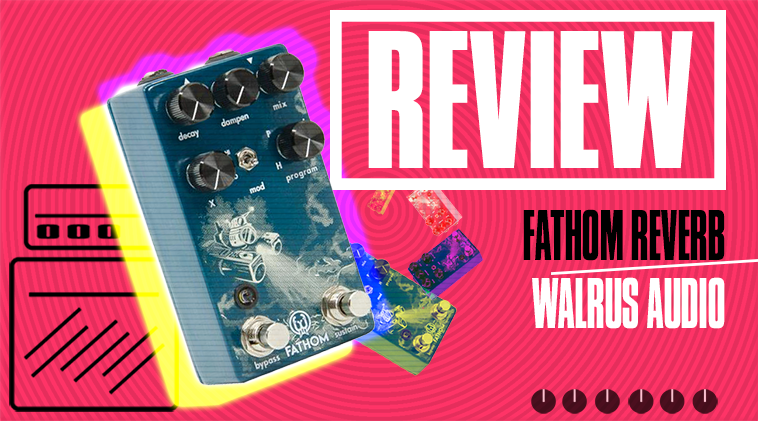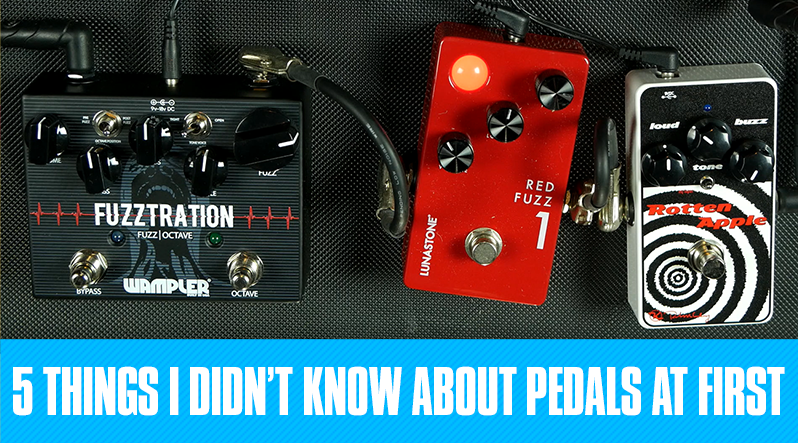
Every guitar player eventually makes their way into the world of guitar pedals.
Guitar pedals can give your guitar a myriad of new sounds like fuzz, overdrive, echo, loop, and more.
That’s exciting!
Here are five things I wish I knew when I first started messing around with guitar effects pedals.
Remember, for more in-depth information on how to set up guitar pedals, watch The Pedal Chain tutorial in Rock Level 1 with Anders Mouridsen.
1. Pedals do not come with a power supply
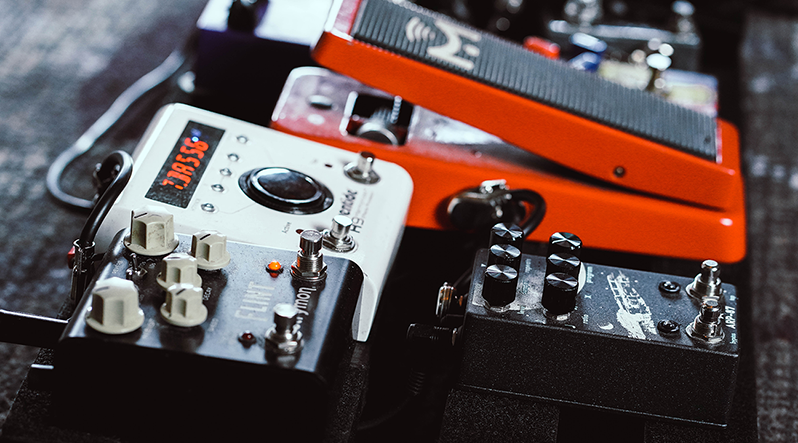
I don’t think I’ve ever purchased a guitar effect pedal that came with a power supply.
I know some do, but I would say that most don’t.
So if you’re shopping for your very first pedal, make sure you also grab a 9 volt power supply.
The majority of all guitar stompboxes require 9 volt power.
If you open up a guitar pedal, you can also put a battery inside but the risk is that the pedal could run out of juice during a performance or a crucial jam session.
2. The order of your pedals matter
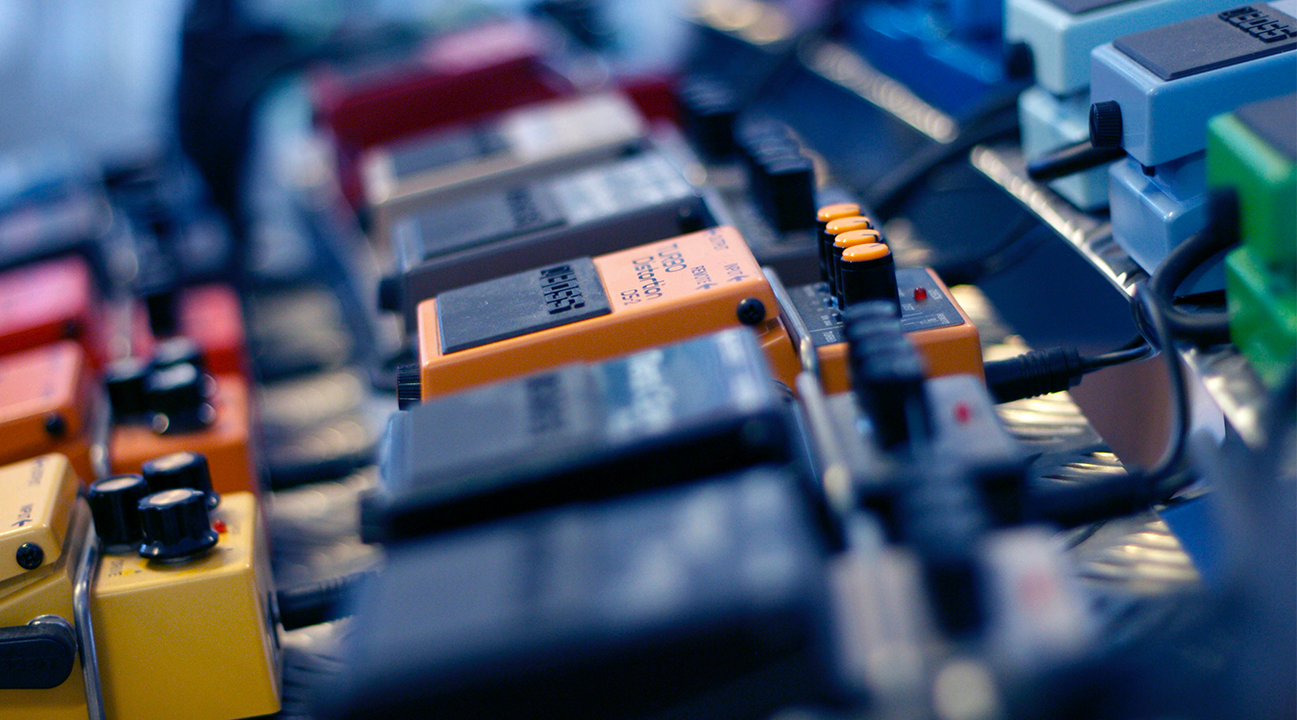
Guitar pedals are placed between the guitar and the amp.
The signal travels from the guitar, to the pedals, and then to the amp.
The order in which the pedals are set up matter because the signal is being processed multiple times if you have multiple pedals.
A general rule of thumb is to first set your distortion and drive pedals first, followed by your modulation pedals like echo, chorus, flanger, tremolo, etc.
Most guitar players do this so that your distortion pedals receive the cleanest, purest signal from your guitar, before it’s processed by say, a delay pedal down the line.
There are no hard rules, so make sure you experiment with the order of your pedal board if you can and listen to the differences.
3. You need an extra cable
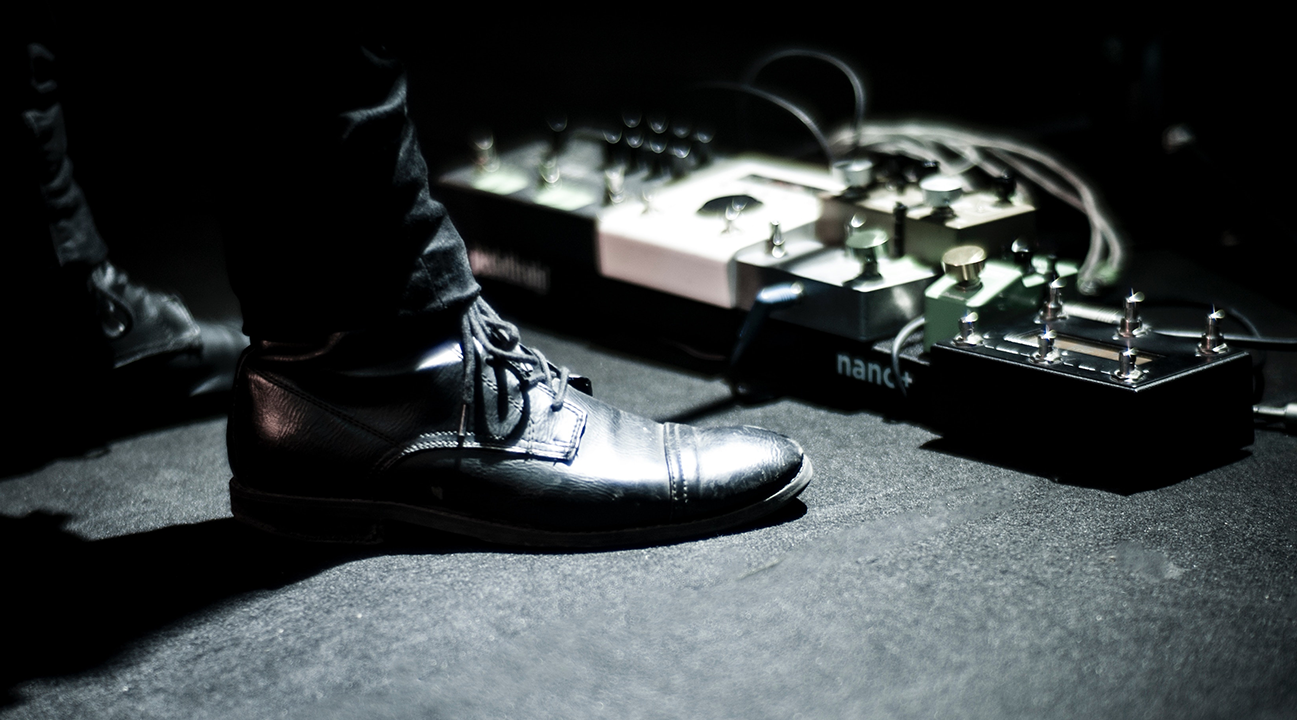
Pedals also don’t come with cables, so make sure you have either an extra cable, or a patch cable so you can connect your pedals together.
Patch cables are short instrument cables that are usually L-shaped at the head to make it easier to fit between two effects.
4. Stepping on a pedal isn’t as easy as it looks
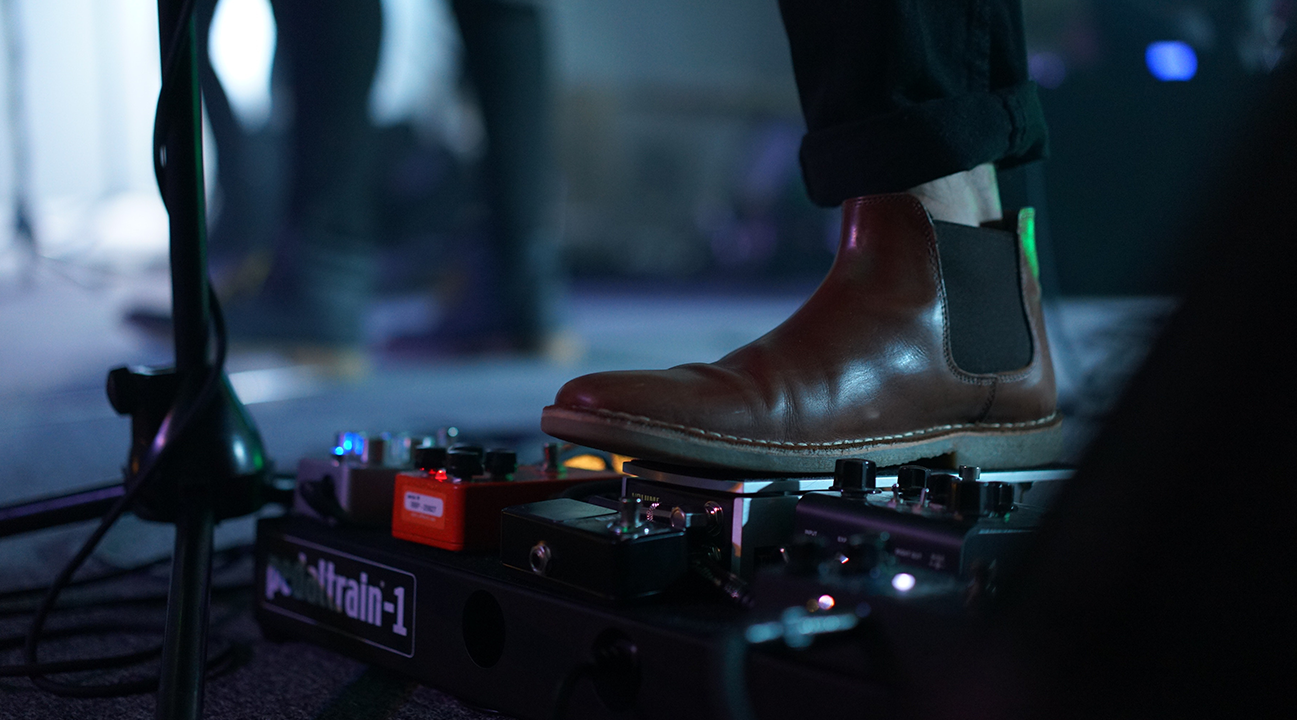
Okay, all you have to do is literally stomp on the switch, but when you’re playing a riff and you need to turn the pedal on at the right moment, that’s when it can get tricky.
This is especially true if you’re playing with a looper pedal, a pedal that records and loops your playing.
Imagine trying to create a perfect loop, where it sounds like someone is playing a rhythm section.
Looper pedals usually require you to hit the switch to start the loop, and then hit it a second time to close the loop.
I’ve definitely mistimed the second hit and the loop usually sounds out of sync or out of tempo.
I suggest practicing with pedals for a little bit so you get the hang of using your foot in time with your hands.
5. Pedal boards are your best friend
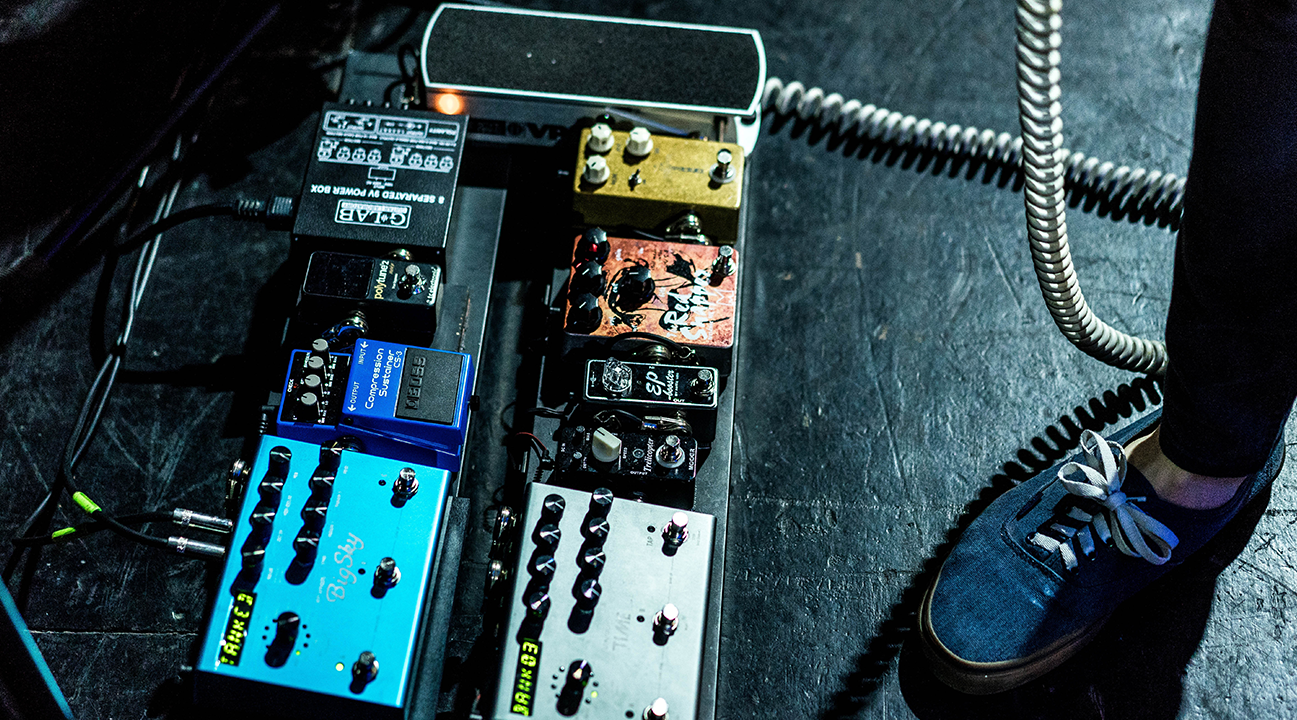
Pedal boards are super useful.
They’re essentially just a board that holds all of your effects.
Companies like Pedaltrain create amazing boards that come with a ton of stuff to get started like power supplies, cables and velcro tape to hold secure the boxes in place.
There are so many different types of guitar pedals and so many things you can do with them, I couldn't possibly write it all up in a single blog post.
But if you wanted to listen to some really great fuzz pedals, make sure to check out the video below where Guitar Tricks Instructor Gary Heimbauer puts three stompboxes to the test.
Get More Tips

